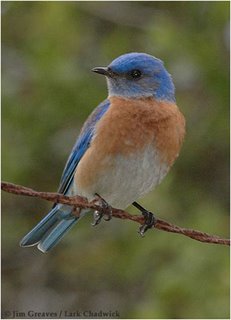
"They're ugly." "They're fussy." "They'd never work in my garden." What good are California native plants, anyway?
In fact, even though we can make almost anything grow here, only California natives have evolved to not only survive but actually thrive through our long dry summers, warm wet winters, and the occasional drought, wildfire, or freeze. And with more than 13,000 species and varieties endemic to the California Floristic Province, it's easy to find natives that will work well, and look great, in your garden.
Many natives resist deer and gophers, and most need less water than your current plantings. But the greatest benefit natives offer is the staggering range of biodiversity they support: songbirds and hummingbirds, bumblebees and butterflies, lizards, frogs, and more. Want Monarchs in your garden? Plant native milkweed. Want bluebirds? Plant Mahonia nevinii. Best of all, as your native bird and insect populations increase, your numbers of mosquitos, aphids, and other garden pests will decrease -- so you'll need less pesticide, which in turn will invite more birds and insects. It's a potent cycle, ultimately benefitting a much larger ecosystem than just your yard.
To choose natives well suited to your garden, you first need to know which plant community evolved in your area. Species in that community won't need a lot of special treatment (e.g. soil amendment, fertilizer, frost protection, or summer water) -- after all, they were here long before you were, so their maintenance is much less demanding than those exotic European and Asian imports we indulge. When you select and place native plants appropriately, maintenance generally comes down to just a few rules: mulch generously, water judiciously, weed diligently, and never, ever fertilize.
The California Native Plant Society is a great resource for more information, including educational programs, plant sales, conservation and preservation efforts, and even activities to help kids develop an appreciation for natural ecosystems. They also maintain an extensive list of native plant nurseries and botanical gardens. Inventories are at their peak now, so take a field trip and see what you're missing. Who knows? You may decide that California natives are a good choice for your garden, after all.
No comments:
Post a Comment